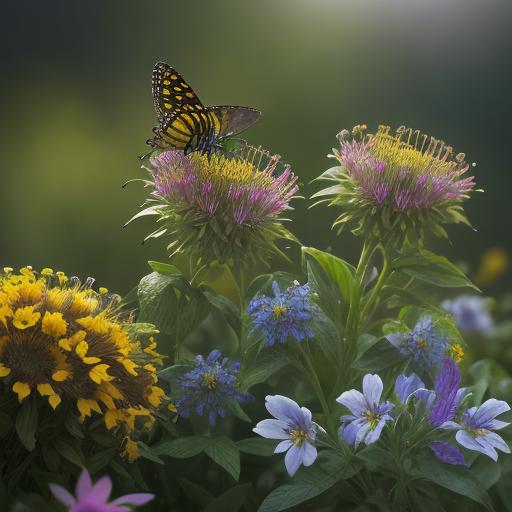Introduction
In recent years, there has been a significant increase in the popularity of pollinator-friendly gardens. These gardens are designed to attract and support essential pollinators such as bees, butterflies, and birds. By planting specific flowers and plants, gardeners can create vibrant, thriving ecosystems that contribute to biodiversity and ecological health. This article will explore the benefits of pollinator-friendly gardens, provide tips on choosing the right plants, and discuss how these gardens play a crucial role in maintaining our environment.
Attention: The Importance of Pollinators
Pollinators are vital to the health of our ecosystems. They play a crucial role in the reproduction of many plants, including a significant portion of our food crops. Without pollinators, we would face a dramatic decrease in food availability and biodiversity. Unfortunately, pollinator populations are declining due to habitat loss, pesticide use, and climate change. This has led to an increased interest in creating pollinator-friendly gardens to support and sustain these essential creatures.
Interest: The Growing Trend of Pollinator-Friendly Gardens
The trend of planting gardens that attract pollinators is gaining momentum among home gardeners, schools, and communities. These gardens are not only beautiful but also serve a critical ecological function. By providing food and habitat for pollinators, gardeners can help counteract the negative impacts of environmental changes and support local wildlife. The visual appeal of these gardens, combined with their ecological benefits, makes them an attractive option for anyone looking to enhance their outdoor space.
Desire: Choosing the Right Plants for Your Pollinator Garden
Creating a successful pollinator-friendly garden involves selecting the right plants. Here are some top choices:
1. Lavender
Lavender is a favorite among bees due to its high nectar content. It is also a hardy plant that thrives in sunny conditions, making it an excellent addition to any garden.
2. Coneflowers
Coneflowers, or Echinacea, are known for their long blooming period and vibrant colors. They attract a variety of pollinators, including bees and butterflies.
3. Butterfly Bushes
As the name suggests, butterfly bushes are a magnet for butterflies. Their fragrant flowers also attract bees and other pollinators. These bushes are easy to grow and come in various colors.
4. Milkweed
Milkweed is essential for monarch butterflies, providing a place for them to lay their eggs and a food source for caterpillars. Planting milkweed can significantly contribute to the conservation of this endangered species.
5. Native Wildflowers
Incorporating native wildflowers into your garden ensures that you provide local pollinators with the plants they naturally prefer. These flowers are adapted to your local climate and soil, making them easier to grow and maintain.
Action: Start Your Pollinator-Friendly Garden Today
By planting a pollinator-friendly garden, you can make a positive impact on the environment. Follow these steps to get started:
- Plan Your Garden: Choose a sunny location and plan your garden layout. Consider including a variety of plants that bloom at different times to provide a continuous food source for pollinators.
- Select the Right Plants: Incorporate a mix of lavender, coneflowers, butterfly bushes, milkweed, and native wildflowers.
- Avoid Pesticides: Use organic gardening methods to avoid harming pollinators with pesticides.
- Provide Water: Include a shallow water source, such as a birdbath or a small dish with stones, for pollinators to drink from.
- Create Habitat: Add elements like rocks, logs, and nesting boxes to provide shelter for pollinators.
FAQs
Q1: Why are pollinators important?
Pollinators are essential for the reproduction of many plants and crops. They help maintain biodiversity and support food production.
Q2: What plants are best for attracting pollinators?
Plants like lavender, coneflowers, butterfly bushes, milkweed, and native wildflowers are excellent for attracting pollinators.
Q3: How can I make my garden more attractive to pollinators?
Choose a variety of plants that bloom at different times, provide water sources, avoid pesticides, and create habitats for shelter.
Q4: Can I create a pollinator-friendly garden in a small space?
Yes, even small gardens, balconies, and container gardens can be designed to attract and support pollinators.
Q5: How do pollinator-friendly gardens contribute to ecological health?
These gardens support pollinator populations, which are crucial for plant reproduction, biodiversity, and overall ecological balance.
Conclusion
Pollinator-friendly gardens are a wonderful way to support biodiversity and contribute to ecological health. By choosing the right plants and creating a welcoming environment, you can attract and sustain pollinators in your garden. Start planting today and join the growing trend of creating beautiful, pollinator-friendly spaces that benefit the environment and enhance your outdoor living experience.

